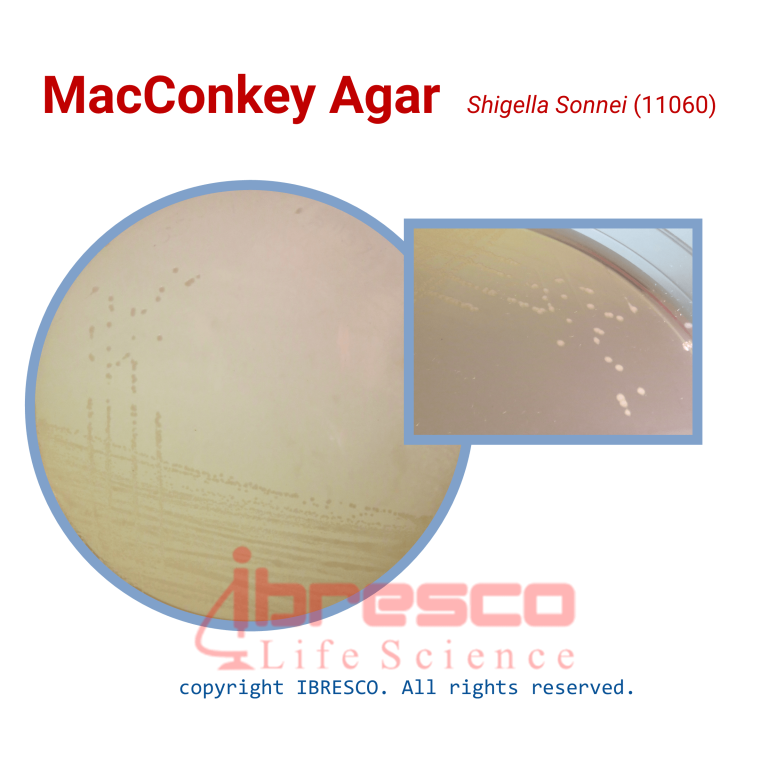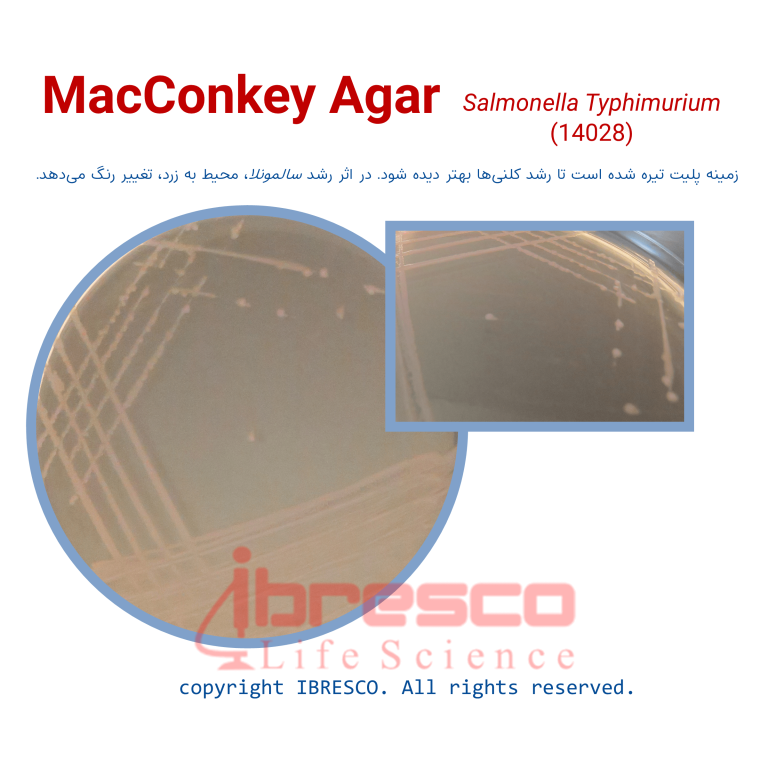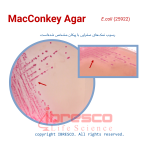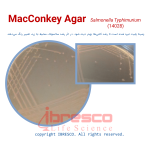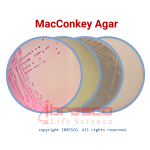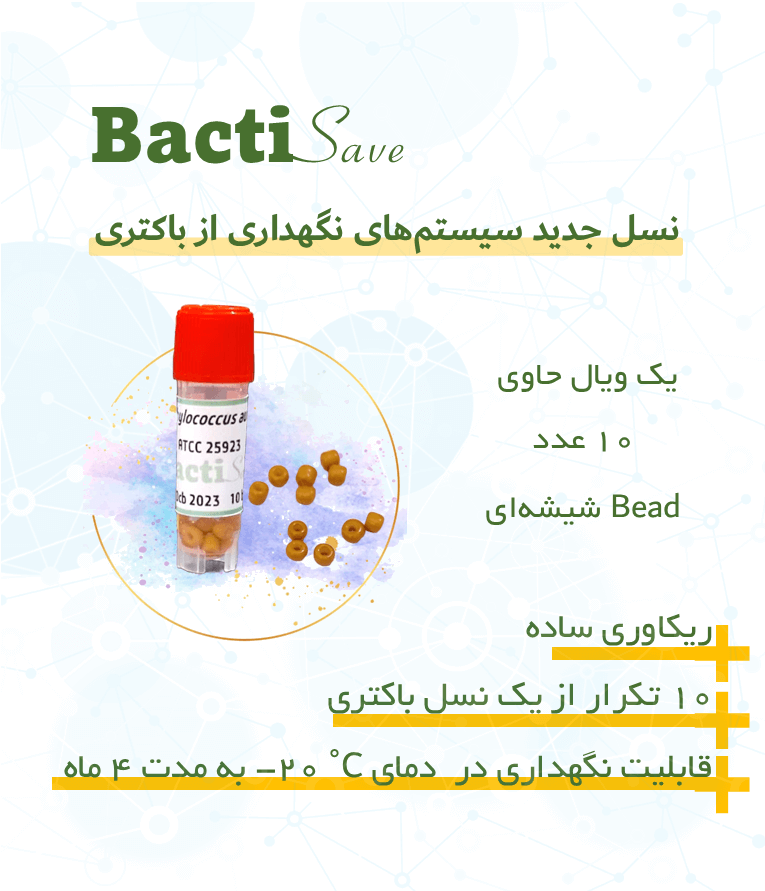توضیحات
Preparation
- Shake the container well. Dissolve 50 grams of the medium powder in one liter of distilled water.
- Heat the solution gently and boil for a few seconds until the medium is completely dissolved.
- Autoclave the culture medium at 121 degrees Celsius for 15 minutes.
- Cool the medium to 47-50°C and pour into the Petri dishes.
STORAGE:
Store the powder in the bottle tightly closed and below 30°C and the prepared medium in the tubes at 2-8°C. The best time to use is before the expiration date printed on the product label.
Test
Test
Test
- Samples of infections should be transferred directly and without delay to the laboratory and not be exposed to extreme heat or cold. Otherwise, the samples should be transferred to suitable transport media and stored in the refrigerator until inoculation.
- Before inoculation, the plate should be placed in the laboratory temperature to reach the same temperature as the room.
- If the sample is transferred to the culture medium using a swab, the swab should be streaked on a corner of the plate. Then, this area is streaked several times to obtain single colonies.
- Using selective culture media alongside this environment is better than non-selective culture media. This increases the chance of detecting gram-negative organisms that may have a small number in the sample. It also helps identify other organisms present in the sample.
- Incubate the plates for 24-18 hours at a temperature of 35 degrees Celsius and aerobically heat them. Avoid exposing the plates to light. If the culture results are negative after 24 hours, incubate the plates for another 24 hours.
Results and Interpretation
In this culture environment, Klebsiella bacteria create red-colored colonies with a halo of yellowish salt precipitation. The yellowish salt precipitation are formed around these colonies due to a decrease in the pH of the culture medium as a result of lactose fermentation. Bacteria that cannot ferment lactose, such as Salmonella typhi, Paratyphi, and Shigella dysenteriae, produce colorless colonies.
Note
- Although MacConkey agar is used as the primary selective culture medium for separating enteric bacilli, biochemical and serological tests are recommended alongside culture.
- Heating the MacConkey agar plates in a high carbon dioxide environment reduces the growth and recovery of some gram-negative enteric bacilli.



